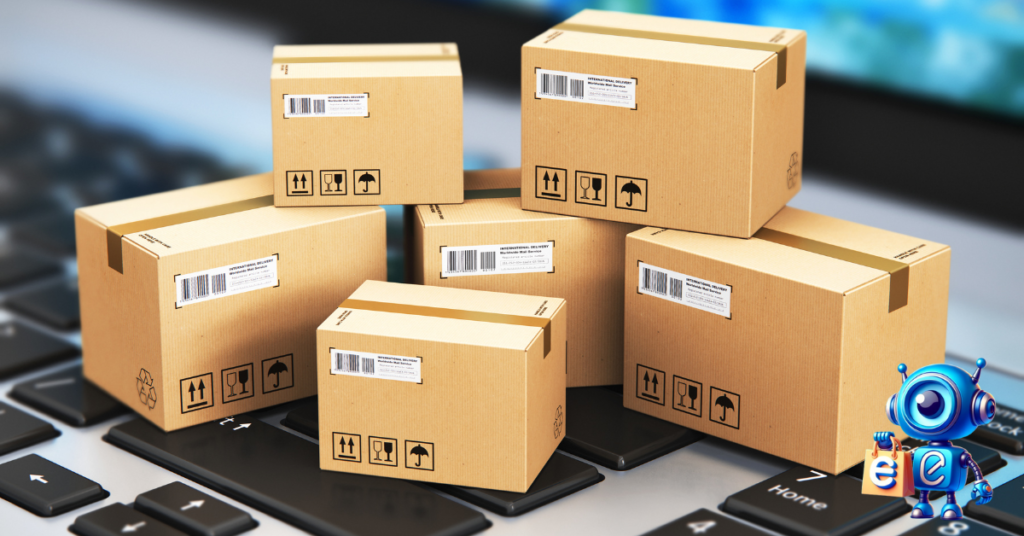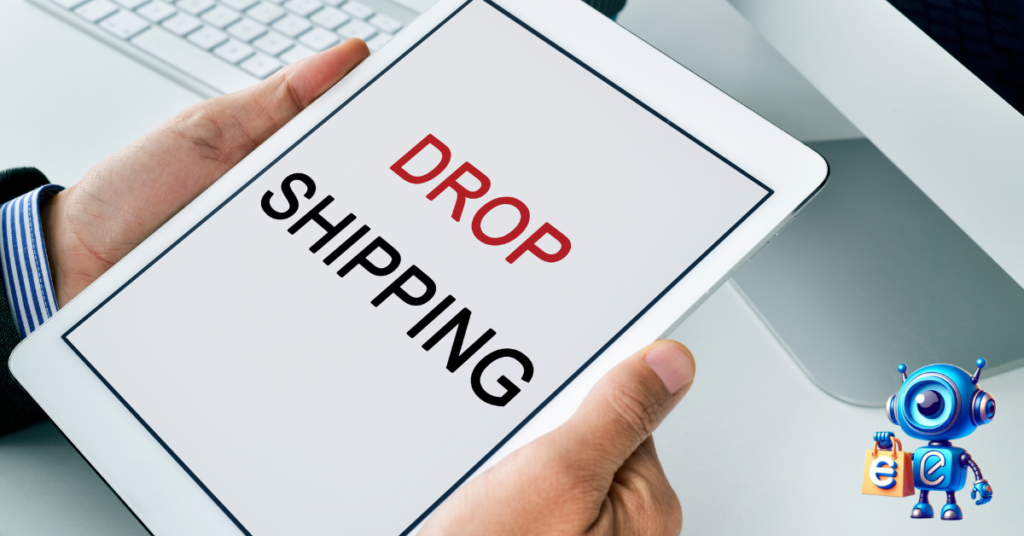“Is dropshipping still profitable in the current landscape of eCommerce?”
This question remains at the top of many budding entrepreneurs’ minds.
The appeal of dropshipping lies in its low initial investment and straightforward entry process.
Yet, many worry about the industry’s fierce competition and overcrowded markets.
If you’re looking into starting a dropshipping business or wondering if your current venture can thrive in this environment, you’re in the right place.
In this guide, we’ll dig into the profitability of drop shipping and what it takes to stand out and make sales in eCommerce.
We’ll share some practical tips to help you find your way and make your dropshipping business a success.
Table of Contents
What Makes Dropshipping Popular?
Dropshipping has emerged as a favored business model for its streamlined startup approach. It eliminates the need for inventory management, enabling entrepreneurs to launch with lower initial investments than traditional retail models.
This model offers flexibility. It allows you to run your business from any location with internet access — a lifestyle many entrepreneurs aspire to achieve.

To initiate a dropshipping business, you must set up an online store, choose products to sell from a supplier’s catalog, market these products, and process sales.
The suppliers then handle shipping and logistics, freeing you to focus on growing your business.
But Is It Still Profitable?
Yes, dropshipping is still a profitable business model in 2024. In 2021, the global dropshipping industry was expected to reach $558 billion by 2025.
Dropshipping is a good option for people looking to start an online business because it only requires a little investment or prior business knowledge. When dropshipping, you don’t need to handle products or invest in inventory:
- When a customer purchases a product from a dropshipping store, a third-party supplier ships it directly to them.
- The customer pays the retail price you set, you pay the suppliers’ wholesale price, and the rest is profit.
Dropshipping can offer about 50% greater profit than holding your inventory.
Dropshipping remains a lucrative option for business owners. Although it doesn’t guarantee success, many have yet to achieve significant profits through dropshipping.
However, it’s essential to understand that the industry has become increasingly competitive, presenting various challenges to overcome.
To thrive, you must conduct thorough research, choose your products wisely, market effectively, and provide excellent customer service.
By staying informed and adaptable, you can increase your chances of succeeding in dropshipping.
4 Key Advantages of Dropshipping Business
Apart from the flexibility and the freedom from managing a physical inventory, dropshipping offers other advantages that make it an appealing option for business owners.
Low initial investment
One significant advantage of dropshipping is the minimal initial investment needed to begin.
Unlike traditional retail setups that demand hefty upfront costs for inventory or renting a physical store, dropshipping lets new business owners launch with little capital.
Since you don’t have to buy inventory upfront, you can use your funds for crucial areas like marketing and attracting customers.
Minimal overhead costs
With no need to manage physical inventory or run a brick-and-mortar store, the ongoing expenses of a drop shipping business are considerably lower. Your main costs will be your website and marketing efforts, which can be scaled according to your budget.
Access to a wide range of products
Since you don’t have to pre-purchase the items you sell, you can offer your customers a more comprehensive range of products. Access to diverse suppliers means you can experiment with your product line to see what resonates most with your target customer.
Potential for high-profit margins
While competition in the industry can be fierce, discovering your niche or providing something unique could lead to significant earnings.
With a solid strategy, dropshipping has the potential to be highly lucrative, allowing you to reap the rewards of your efforts in marketing and brand-building.
6 Things to Know Before Starting a Dropshipping Store
Before launching a dropshipping business, it’s essential to understand a few key things.
Conduct market research and select a niche.
Think about what kind of products you’re interested in selling. Are there specific niches or industries that catch your eye?
For example, you’re passionate about fitness and nutrition, so you consider selling workout gear or health supplements. Once you have some ideas, it’s time to research.
Look into market trends, customer preferences, and competitor landscapes to see where there might be opportunities.
Find reliable suppliers
Finding reliable suppliers is another crucial step in establishing a successful dropshipping business.
After all, you’ll rely on them to fulfill orders and deliver products to your customers. But how do you know which suppliers to trust?
One way is to contact potential suppliers and ask questions about their products, shipping times, and return policies.
You can also look for reviews or testimonials from other drop shippers to understand their reputation.
Remember, the relationship between you and your suppliers is crucial, so take the time to find partners you can rely on.
Set up an eCommerce platform.
After deciding on your niche and securing trustworthy suppliers, the next step is to establish your eCommerce platform.
This is your online storefront, where you’ll display your products, handle orders, and engage with customers.
You have various options, from well-known platforms like Shopify and WooCommerce to smaller, niche-specific platforms.
When selecting the right platform for your business, consider user-friendliness, customization capabilities, and pricing. Additionally, remember the importance of branding!
Your eCommerce platform should mirror your brand’s identity and principles, so take the opportunity to personalize it according to your preferences.
Implement marketing and promotion strategies.
If no one knows about your products, how will they buy them? That’s why marketing and promotion are essential to any successful dropshipping business.
Think about your target audience and where they spend their time online. Are they active on social media?
Do they read blogs or watch YouTube videos? Tailor your marketing efforts to reach them where they are.
You can partner with influencers, run ads, implement content marketing, utilize email campaigns, and leverage tools like eCommercebot’s AI Social Media Manager.
Manage customer service and returns.
Managing customer service and returns is another crucial aspect of dropshipping that requires careful attention. While you won’t be handling the products yourself, you’ll still be responsible for any issues that may arise.
This includes:
- Promptly responding to customer inquiries.
- Efficiently handling returns and exchanges.
- Effectively resolving any problems encountered during the ordering process.
Providing exceptional customer service is crucial for building trust and loyalty with your customers, so be prepared to allocate time and resources to this integral aspect of your business.
Handle the legal and administrative matters.
Finally, remember the legal and administrative side of running a dropshipping business.
Ensure you understand your region’s laws and eCommerce regulations, such as tax codes, privacy laws, and product safety guidelines.
You’ll also need to handle administrative tasks like business registration, acquiring permits or licenses, and maintaining precise financial records.
Though these tasks may not be the most thrilling aspect of dropshipping, they’re essential for staying compliant and protecting your business in the long run.
10 of the most profitable dropshipping products
Let’s look at some of the most profitable products you can sell through dropshipping to give you an idea of the opportunities available.
From fitness and health products to eco-friendly goods, a diverse range of items have shown to be lucrative in this industry.
- Fitness and wellness products. With the increasing focus on health and wellness, items like yoga mats, resistance bands, and protein supplements are in high demand.
- Smart home devices. Smart home devices are gaining popularity among consumers as technology advances. These include items like smart plugs, smart bulbs, and smart speakers.
- Beauty and skincare products. The beauty industry is thriving, with skincare serums, facial masks, and makeup brushes being hot-selling items.
- Fashion accessories. From sunglasses and watches to handbags and jewelry, fashion accessories are always in style and can be highly profitable for drop shippers.
- Pet supplies. Pet owners are willing to splurge on their furry friends, making items like pet grooming tools, toys, and accessories a lucrative niche.
- Home decor. With more people spending time at home, there’s been a surge in demand for home decor items like wall art, decorative pillows, and indoor plants.
- Electronics accessories. Electronic accessories are in demand in today’s tech-savvy world. There’s a consistent demand for these products, from phone cases and screen protectors to wireless chargers and headphones.
- Kitchen gadgets. Cooking and baking have become popular hobbies for many people. This increased demand for kitchen gadgets like spiralizers, avocado slicers, and reusable silicone food storage bags.
- Travel accessories. As travel restrictions ease, travelers look for convenient and practical travel accessories like packing cubes, neck pillows, and portable chargers.
- Sustainable products. With increasing awareness about environmental issues, eco-friendly and sustainable products like reusable water bottles, bamboo toothbrushes, and organic cotton clothing are gaining popularity among consumers.
Remember that the profitability of dropshipping products can vary based on factors like market demand, competition, and your marketing strategies.
It’s essential to conduct thorough research and experiment with different products to determine what suits your dropshipping business best.
Is Dropshipping Still Profitable?
This guide has covered the basics of dropshipping, highlighting its advantages and the critical steps in launching one.
Despite its challenges, dropshipping remains a viable option for entrepreneurs. Success isn’t guaranteed, but you can thrive in this industry with dedication and adaptability.
So, if you’re considering dropshipping, go for it! Stay focused, stay informed, and be willing to adapt. Equipped with the right strategies and powerful online tools, you can turn your venture into a rewarding and profitable business.
Start shopify Free Trial Today


Frequently Asked Questions
1. What is dropshipping?
Dropshipping is a retail fulfillment method where a store doesn’t keep the products it sells in stock. Instead, when a store sells a product, it purchases the item from a third party and has it shipped directly to the customer.
2. How much does it cost to start a dropshipping business?
The cost of starting a dropshipping business can vary. Typically, you’ll need to invest in setting up an online store, marketing, and possibly some initial inventory purchases. However, the upfront costs are relatively low compared to traditional retail models.
3. Do I need to handle shipping and inventory in dropshipping?
No, one of the main advantages of dropshipping is that you don’t need to handle shipping or hold inventory. Your suppliers take the shipping and storage of products, allowing you to focus on marketing and sales.
4. How do I find dropshipping suppliers?
You can find dropshipping suppliers through online directories, trade shows, and industry-specific forums. It’s important to research potential suppliers carefully to ensure they’re reliable and offer quality products.
5. What types of products can I sell through dropshipping?
You can sell a wide range of products through dropshipping, including electronics, fashion items, home goods, and more. Choosing products with high demand and low competition is essential to maximize your chances of success.
6. Is dropshipping legal?
Yes, dropshipping is legal in most countries. However, you’ll need to comply with any relevant regulations, such as consumer protection laws and tax regulations, in the jurisdictions where you operate.
7. How do I handle customer service and returns in dropshipping?
While you won’t handle products directly, you’re still responsible for customer service and returns. You’ll need to address customer inquiries, process returns, and take any issues with orders.
8. Can I make a profit with dropshipping?
Yes, dropshipping can be profitable. But remember that you’ll need careful planning, market research, and effective marketing strategies to generate sales and profit.
9. How long does it take to see results with dropshipping?
The timeline for seeing results with dropshipping can vary depending on factors like your niche, marketing efforts, and competition. Some entrepreneurs quickly see success, while others may take longer to build their business.
10. Is dropshipping suitable for beginners?
Dropshipping can be a good option for beginners because of its low startup costs and simplified logistics.

